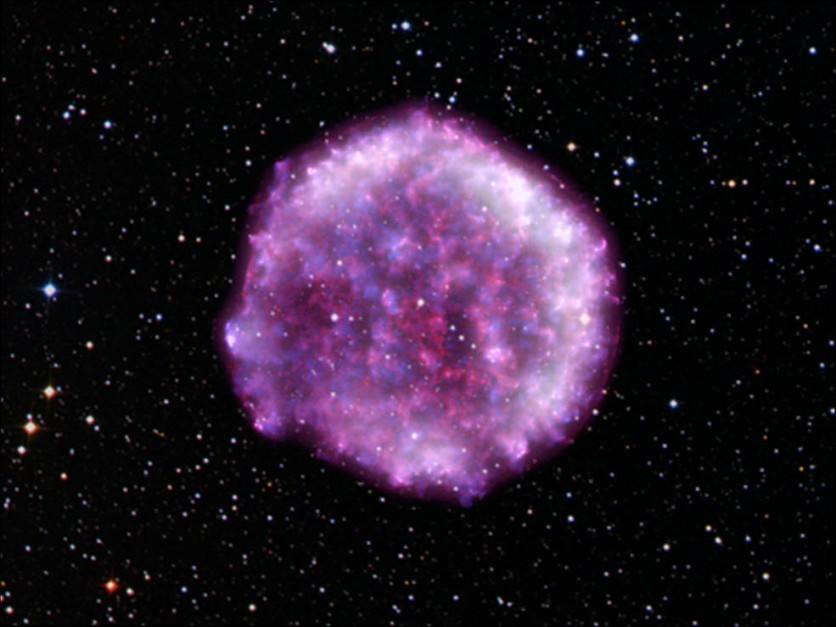The remnants of a star whose explosion was found 450 years ago have been the subject of new research by a global team of experts.
The findings offered fresh information regarding the circumstances under which supernovae, or massive star explosions, accelerate particles close to the speed of light.
Tycho is the name of the supernova remnant, which bears the name of the Danish astronomer Tycho Brahe, who discovered it in the Cassiopeia constellation in 1572.
In the latest research, polarized X-rays from the Tycho supernova remnant were examined using NASA's Imaging X-ray Polarimetry Explorer (IXPE).

Historical Supernovae
IXPE was the first to reveal the shape of the magnetic fields surrounding the shock wave, which is still growing from the initial explosion and forms a barrier around the material expelled.
"As one of the so-called historical supernovae, Tycho was observed by humanity in the past, and had a lasting social and even artistic impact," said Dr. Riccardo Ferrazzoli, a researcher at the Italian National Institute for Astrophysics in Rome, said in a statement.
Scientists can determine the average direction and order of the magnetic field of the light waves that make up X-rays from a high-energy source like Tycho by measuring their polarization.
The mechanism known as "synchrotron emission" causes electrons traveling in the magnetic field to emit polarized X-rays.
The magnetic field direction at the site where the X-rays were created can be traced back from the polarization direction of the X-rays. This knowledge aids researchers in answering some of the most complex astrophysical problems, such as how Tycho and other objects can accelerate particles more quickly than even the most potent particle accelerators on Earth.
Tycho's magnetic field was mapped with remarkable clarity and size thanks to IXPE. Tycho's magnetic field has been observed by earlier telescopes in radio waves, but IXPE detected the field's form on scales smaller than one parsec, or around 3.26 light-years.
According to NASA, this data is important as researchers try to understand how particles are accelerated after the blast wave of the original explosion.
Type la Supernova
The Tycho supernova is an example of a Type Ia supernova, which happens when a white dwarf star in a binary system rips apart its partner star, taking some of its material and setting off a powerful explosion.
Debris is launched into space at incredible speeds when the white dwarf is destroyed. The majority of galactic cosmic rays, including those that constantly bombard Earth's atmosphere, are thought to have originated from such events.
It is estimated that the Tycho supernova explosion alone produced as much energy as the Sun would over 10 billion years.
When the Tycho supernova was discovered in 1572 by Brahe and other astronomers, possibly including an 8-year-old William Shakespeare, its brightness made it visible to the naked eye on Earth. Shakespeare would later describe it in an early section of "Hamlet" around the 17th century.
Related Article : NASA's James Webb Space Telescope Finds Massive Galaxies That Are 'Too Big to Even Exist'

ⓒ 2026 TECHTIMES.com All rights reserved. Do not reproduce without permission.




